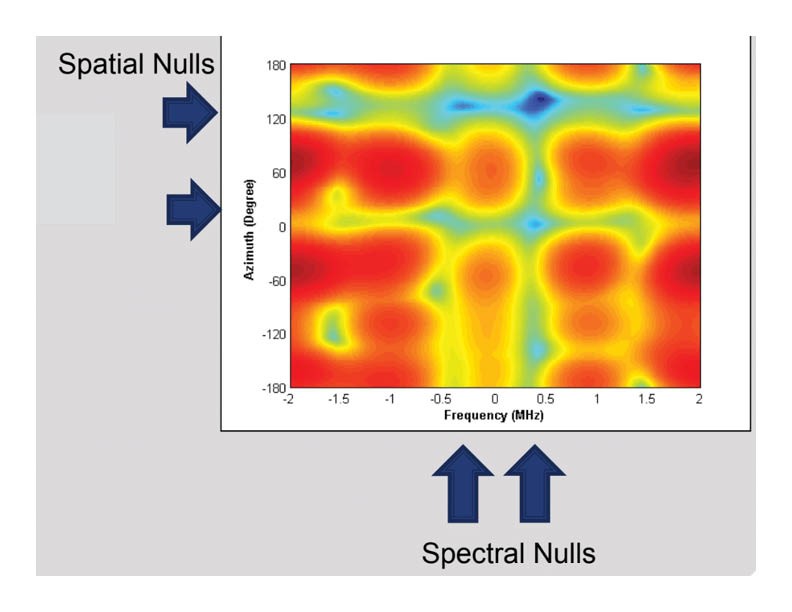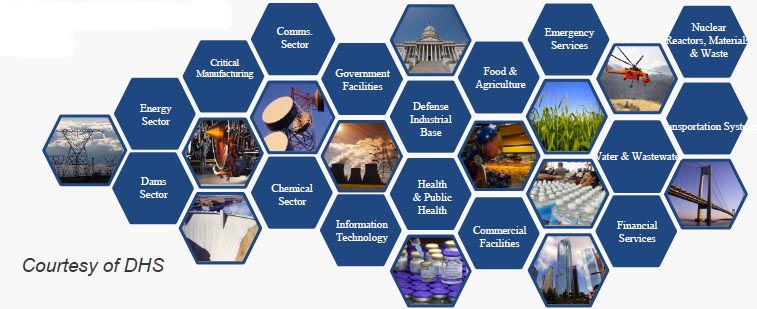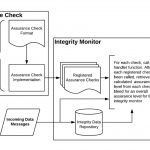Since 2015, controlled reception pattern antennas (CRPAs) have come onto the market for civil applications where the need to counter increasing GNSS signal jamming and spoofing has grown exponentially. Highly classified and previously available only to authorized military users, these powerful — and unfamiliar — components expand protection for critical infrastructure. All systems incorporating them should be tested for revamped vulnerabilities. This is how.
A free webinar on Wednesday, March 25 from 1:00 PM – 2:30 PM Eastern Daylight Savings Time addresses the topic “GNSS Vulnerability Testing and the Controlled Reception Pattern Antenna (CRPA).”
The technically rich educational event is sponsored by Spirent Communications and Inside GNSS.
Several companies now manufacture controlled reception pattern antennas (CRPAs) that can be profitably incorporated in civilian R&D and product development, particularly for critical infrastructure and timing applications in power grids and communication. In addition, CRPA can be done with low-cost hardware, extending their potential application. It’s important to understand CRPA capabilities and options in order to take advantage of their powerful features.
All those interested in robust PNT signals, safe navigation, autonomous navigation and new product development will profit from the in-depth technical insights afforded by this hour-and-a-half tutorial.
Register now for this free webinar.
The discussion gives a holistic overview of GNSS vulnerability and available countermeasures:
- the range of new threats and efforts to crash receivers, from cyber attacks to meaconing
- Threat classification and categorization in all layers (signal, coding, data, protocol);
- efficient RFI simulation testing: modeling the transmitters, how many to model, simulating moving transmitters;
- the fundamentals of CRPA technology;
- CRPA options: null forming, beam steering, minimum variance distortionless response and more;
- key parameters for RFI simulation involving CRPAs
- why it is important to simulate at all phases of product development.
Demonstrations and key takeaways include:
- The advantages of simulation over testing in the field, and what constitutes a good simulator.
- What to look for when selecting a CRPA system for purchase: the performance you should expect.
- The significance and impacts of new signal authentication schemes, set to begin this quarter with Galileo and to be further implemented with testing aboard NTS-3 of the Chimera concept.
- risk assessment in specific scenarios such as autonomous driving.
- what have been the mistakes in testing in the past, the emerging standards and what we can expect in the future.
- Test results and illustrative data.
The expert panel:
 Kimon Voutsis, PhD. Product Manager for High-end PNT Test Solutions at Spirent Communications. Kimon has more than 10 years of professional experience in providing guidance and technical solutions for positioning, navigation and timing applications, to military, governmental and commercial organizations. He holds a Ph.D. in Robust Positioning, Navigation & Timing Applications from the Space Geodesy & Navigation Laboratory, Department of Civil, Environmental & Geomatic Engineering, University College London.
Kimon Voutsis, PhD. Product Manager for High-end PNT Test Solutions at Spirent Communications. Kimon has more than 10 years of professional experience in providing guidance and technical solutions for positioning, navigation and timing applications, to military, governmental and commercial organizations. He holds a Ph.D. in Robust Positioning, Navigation & Timing Applications from the Space Geodesy & Navigation Laboratory, Department of Civil, Environmental & Geomatic Engineering, University College London.
 Oscar Pozzobon, Technical Director, Qascom. Oscar is the founder and technical director of Qascom. He has been working in the domain of GNSS security, authentication and robust navigation for more than 20 years. As technical director he coordinates the four units of Qascom of Engineering & Cybersecurity, Simulation Systems, Advanced Navigation and Attack Detection Systems. He coordinates a number of space programs and activities with the European Space Agency (ESA), the European GNSS Agency (GSA),the European Commission (EC), the National Aeronautics and Space Administration (NASA) and the Italian Space Agency. Since 2008, He contributed to the design and testing of 2 of the 5 Galileo services. His main interests are Space, GNSS and cryptography, where he has issued more than 50 publications. He is adjunct professor at the University of Padova for Satellite Navigation. He has a Master in Telecommunication engineering and a Ph. D. in Aerospace and Satellite Applications.
Oscar Pozzobon, Technical Director, Qascom. Oscar is the founder and technical director of Qascom. He has been working in the domain of GNSS security, authentication and robust navigation for more than 20 years. As technical director he coordinates the four units of Qascom of Engineering & Cybersecurity, Simulation Systems, Advanced Navigation and Attack Detection Systems. He coordinates a number of space programs and activities with the European Space Agency (ESA), the European GNSS Agency (GSA),the European Commission (EC), the National Aeronautics and Space Administration (NASA) and the Italian Space Agency. Since 2008, He contributed to the design and testing of 2 of the 5 Galileo services. His main interests are Space, GNSS and cryptography, where he has issued more than 50 publications. He is adjunct professor at the University of Padova for Satellite Navigation. He has a Master in Telecommunication engineering and a Ph. D. in Aerospace and Satellite Applications.
.
 Sherman Lo, Sr Research Engineer, Aeronautics and Astronautics, Stanford University. Sherman’s work focuses on navigation safety, security and robustness. At Stanford, he was Associate Investigator for the FAA evaluation of enhanced Loran and alternative position navigation and timing (APNT) systems for aviation. He currently leads work examining GNSS interference and spoofing detection and mitigation. He has over 100 conference, 20 journal, 14 magazine publications and 8 issued US patents. Sherman has a Ph.D. from Stanford University, and bachelor’s degrees from University of Maryland, College Park. He teaches an undergraduate navigation class at Stanford.
Sherman Lo, Sr Research Engineer, Aeronautics and Astronautics, Stanford University. Sherman’s work focuses on navigation safety, security and robustness. At Stanford, he was Associate Investigator for the FAA evaluation of enhanced Loran and alternative position navigation and timing (APNT) systems for aviation. He currently leads work examining GNSS interference and spoofing detection and mitigation. He has over 100 conference, 20 journal, 14 magazine publications and 8 issued US patents. Sherman has a Ph.D. from Stanford University, and bachelor’s degrees from University of Maryland, College Park. He teaches an undergraduate navigation class at Stanford.






